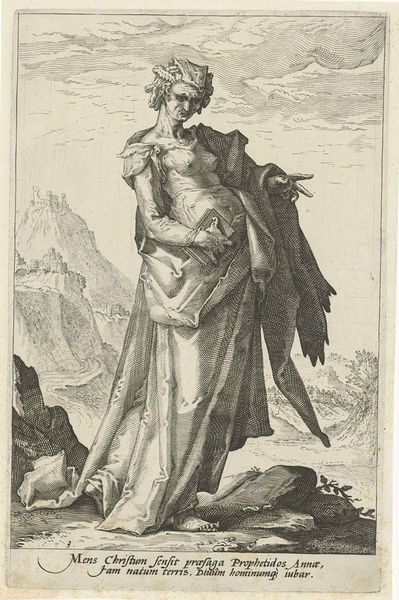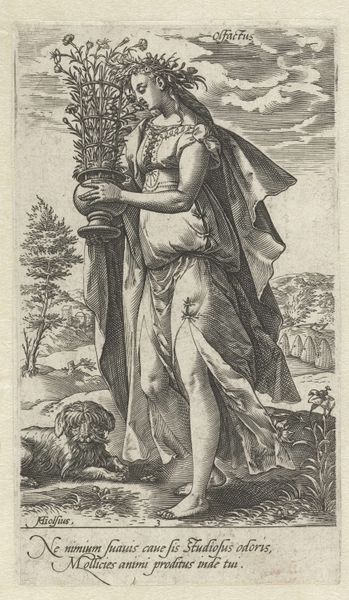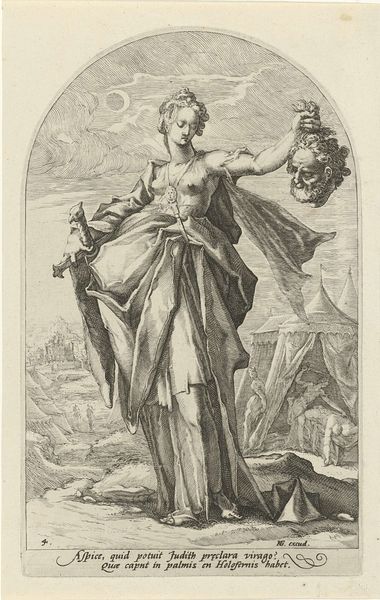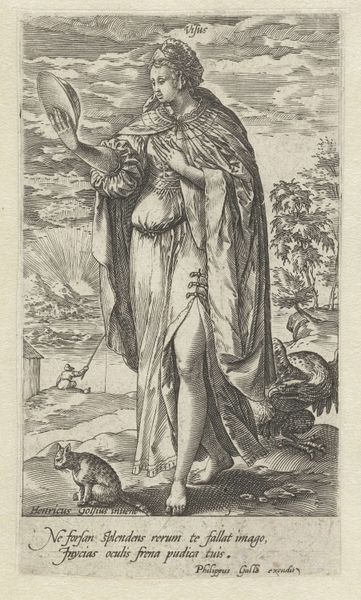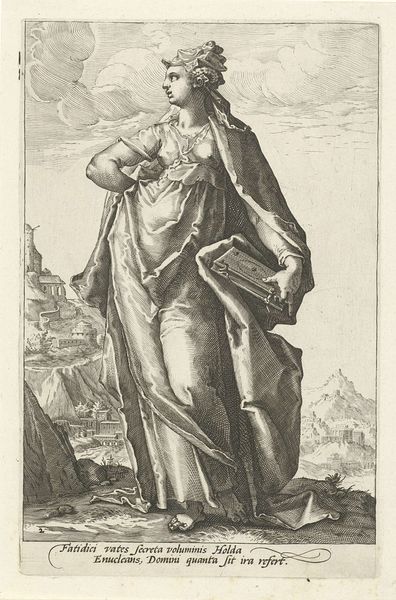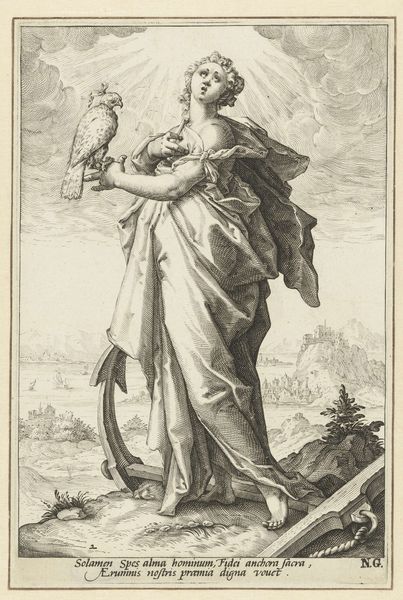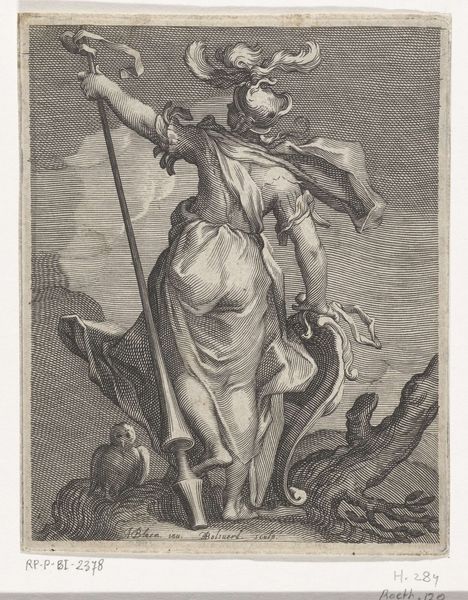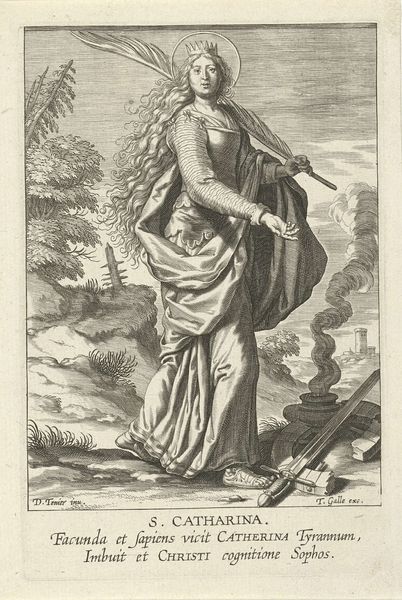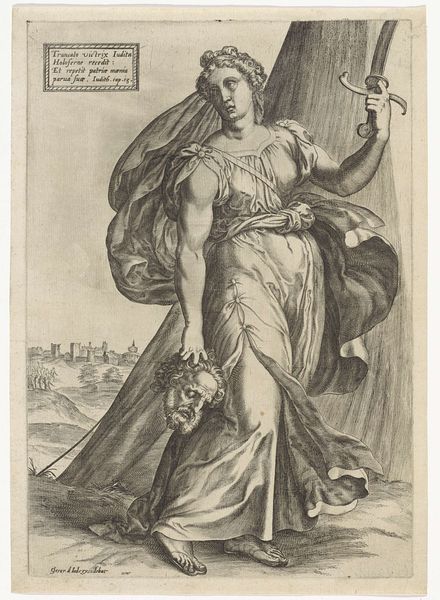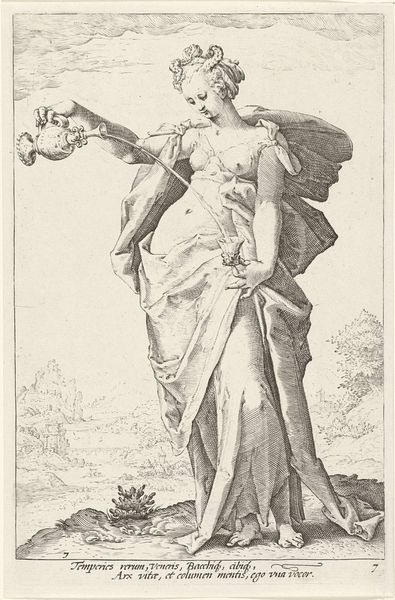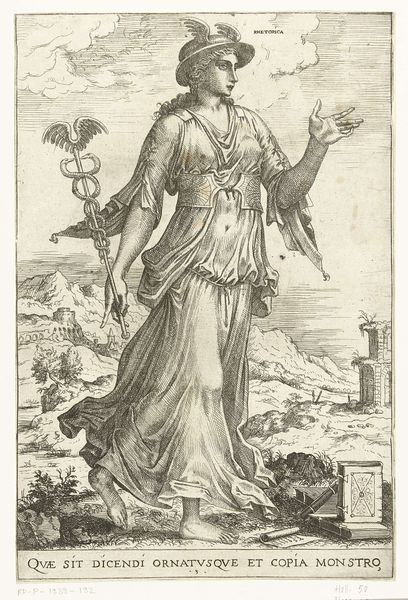
Dimensions: height 252 mm, width 163 mm
Copyright: Rijks Museum: Open Domain
Editor: This is Jacob Matham's "Debora," an engraving from 1588 currently at the Rijksmuseum. I’m struck by how the figure dominates the landscape, but what particularly fascinates me is the texture and intricate detail Matham achieves with just lines. What stands out to you? Curator: As a materialist, my focus shifts from simply admiring the detail to considering the labor and process involved in creating that detail. The engraving – the act of carving those lines into a metal plate, the physicality, the repetition. Consider the social context too; who was Matham making this for? Editor: Presumably a wealthy patron? Someone who appreciated skilled craftsmanship? Curator: Exactly. And what does that patronage mean? It signifies a system where Matham’s skill and labor are commodities. His artistry is literally being bought and sold. Do you see how the detailed rendering of Debora’s clothing almost elevates it beyond mere representation to showcase a tactile richness itself – a silent signal to the material conditions of luxury and trade during that period? It makes you think of how fabrics were produced, traded, and consumed, doesn't it? Editor: I see what you mean. The engraving is not just a picture, it’s an object representing those systems of production and consumption. It is made of labor that requires consumption to even make it exist. It's about power too, isn't it? Who commissions art, who consumes it, and who creates it all ties into social hierarchies. Curator: Precisely. This work invites us to investigate not just the 'what' of art, but the 'how' and 'why' – the processes and social structures embedded within. We learn how our interpretations of it now reflect how we see it now and its legacy.
Comments
No comments
Be the first to comment and join the conversation on the ultimate creative platform.
